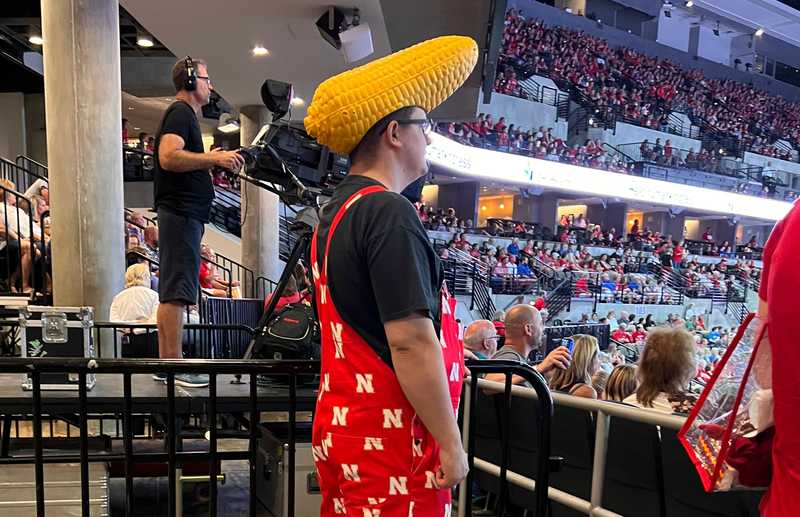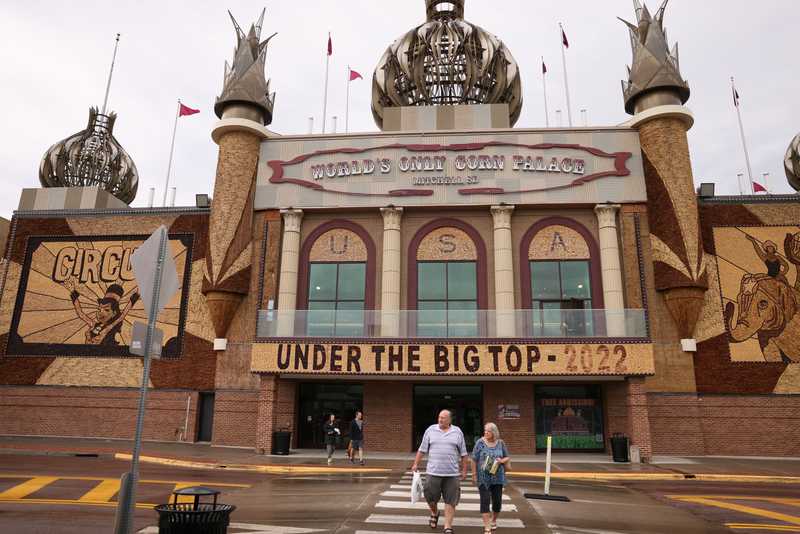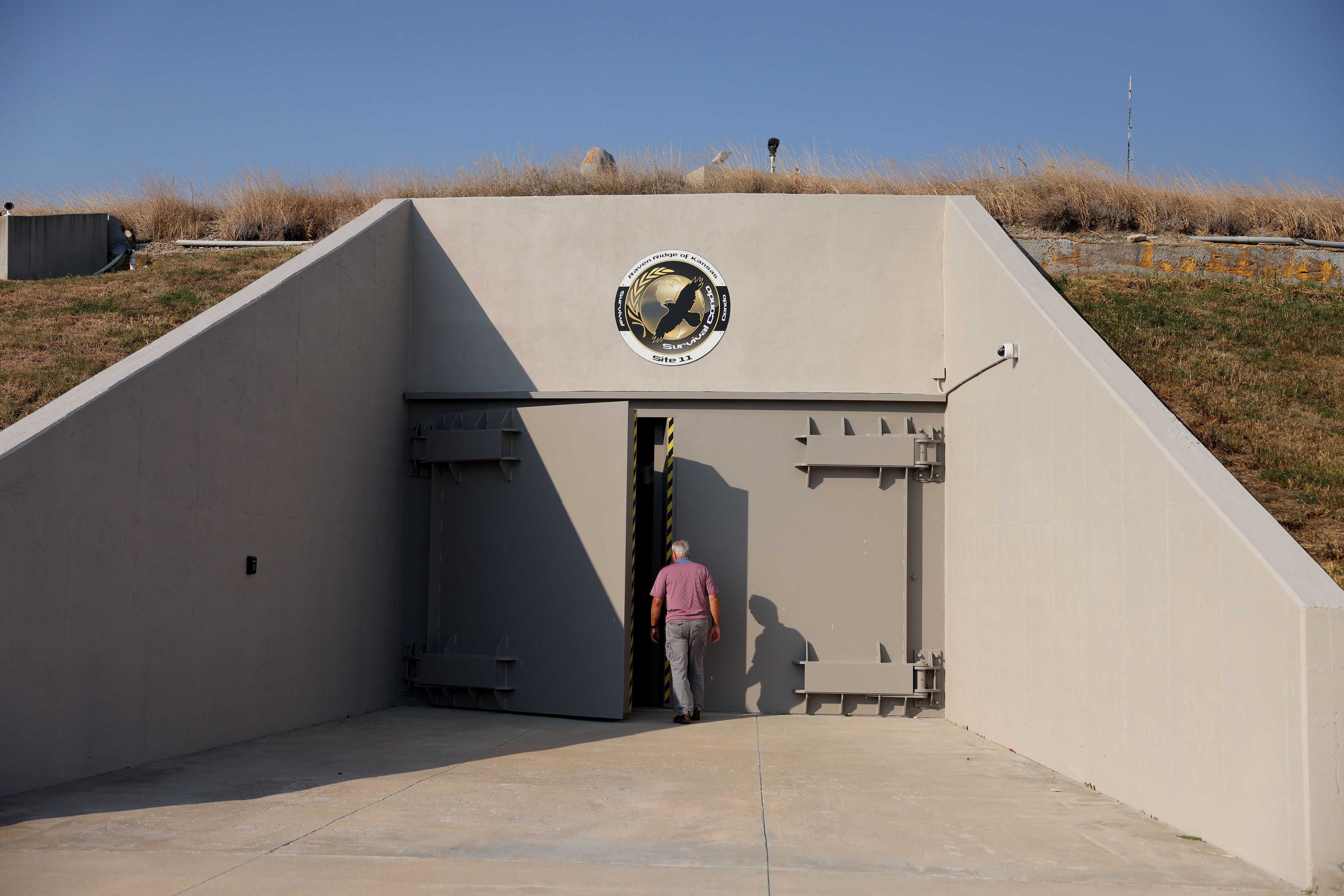
Seattle team
Oct. 27, 2022
The apocalypse will be pricey: Visit luxury ‘survival condos’ in an old missile silo
AN UNDISCLOSED UNDERGROUND LOCATION, Kansas — It sounds like a pitch for a futuristic Netflix series: millionaires sheltering deep beneath the prairie, holed up in a luxury “survival condo” complex tucked into the belly of a former missile silo.
But these 14 bunker condos are real, and available now to cash buyers only (because what bank will lend to someone planning for the world to end?). On a dirt road surrounded by nothing but fields, past a military-grade fence and a large, armed guard, we found the place one afternoon last month, and embarked on a tour that was part high-end open house, part Cold War history lesson, and part reflection on America.
Built between 2010 and 2013, the condos generated interest from the start. But everything changed once the pandemic struck.
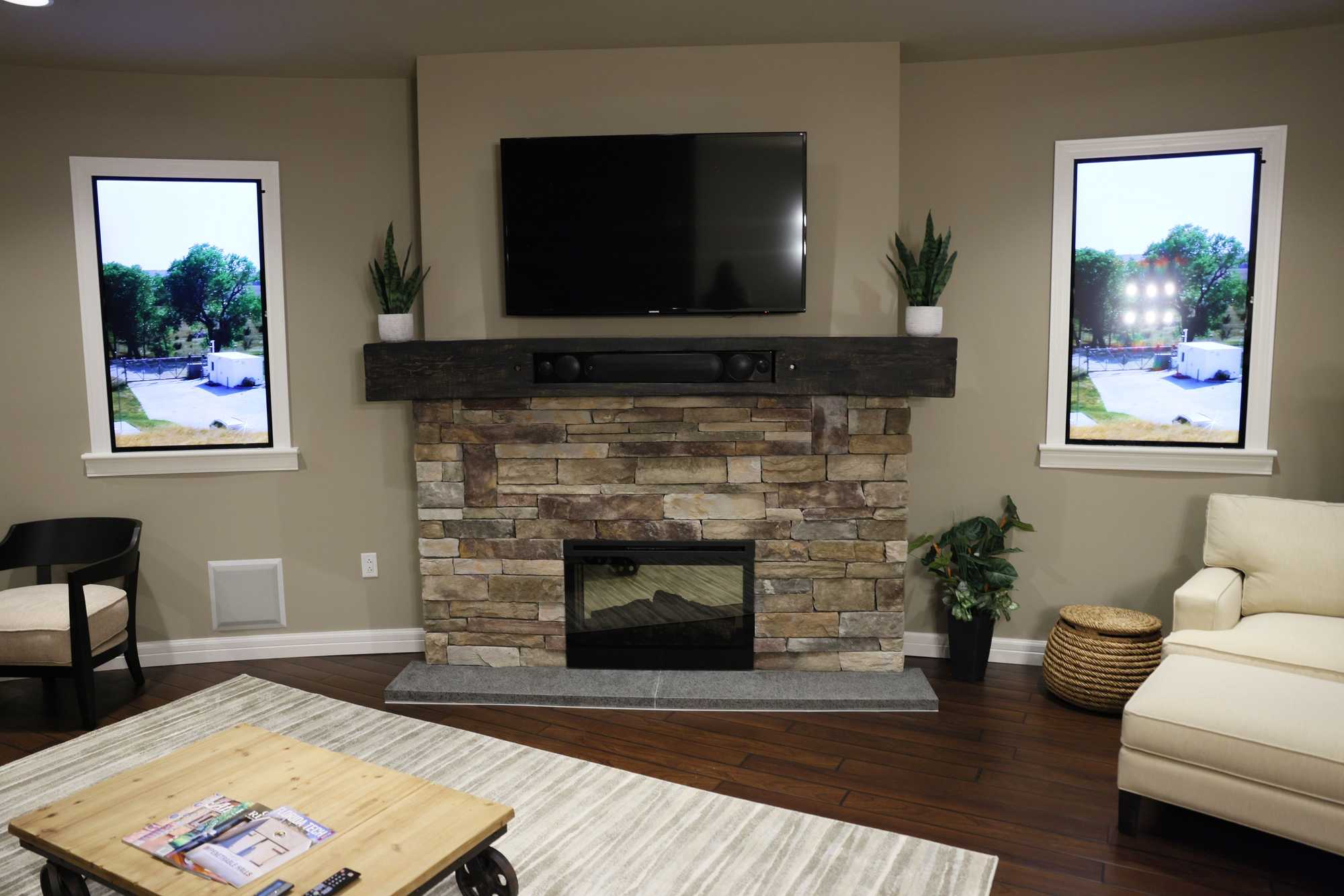
Recent stories from the Seattle team
“Before COVID, everyone asked, ‘But will we ever really need it?’” said Larry Hall, the engineer, developer, and owner of the Survival Condo complex. “After COVID, no one asked that question.”
Hall is an engineering geek, exuberantly obsessed with the historic and scientific details of the silo, originally built in the 1950s to store and launch nuclear warheads. He’s also a savvy salesman who gives no hint of his own politics — or whether he really thinks the world will end — while hosting two curious journalists at this windswept spot some 80 miles from the geographic center of the country.
He led us through a pair of towering, 16,000-pound blast doors and pushed them gently closed, shutting out the sunlight and vast, blue sky. The entryway is decorated with historic photos, including one of John F. Kennedy visiting a missile silo during the Cold War. From the ground floor, the elevator travels only down: 15 floors to the bottom of the complex, 200 feet below.
The condos’ power to fascinate seems to emanate from their jarring juxtapositions. Amenities include a saltwater swimming pool, rock climbing wall, movie theater, and dog park — as well as a volcanic ash scrubber, to clean the air in case of a catastrophic eruption 900 miles away at the Yellowstone calderas. A water processing system treats all incoming water as if it were poison, and blast valves built into the air intake pipes are designed to shut automatically under pressure to protect the structure from the pulverizing shock wave of a 20-kiloton nuclear detonation.
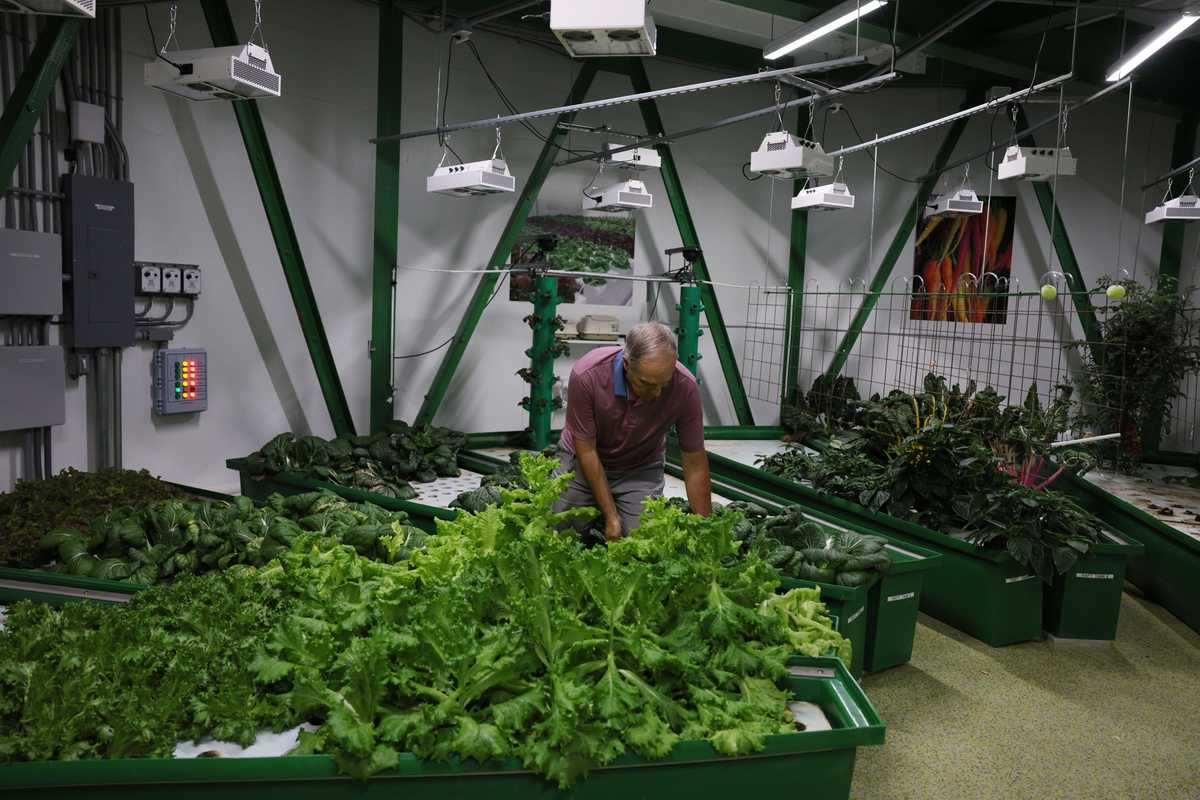


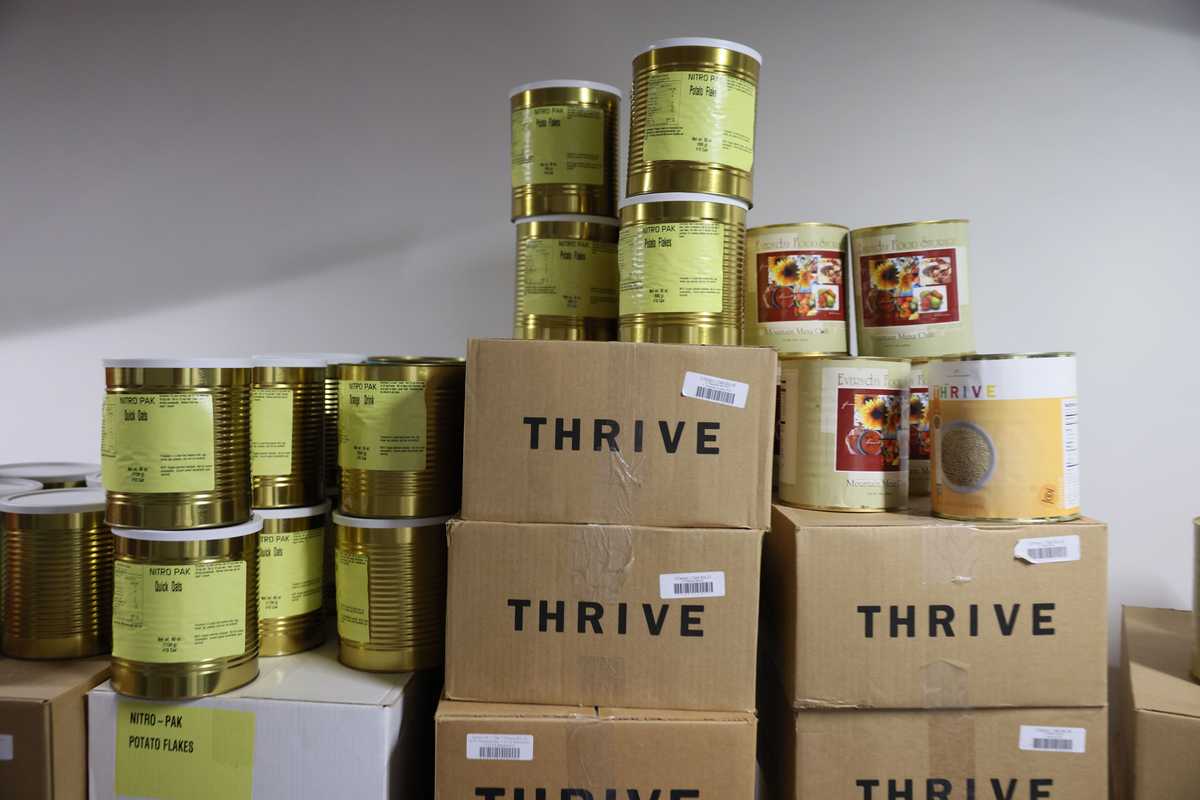

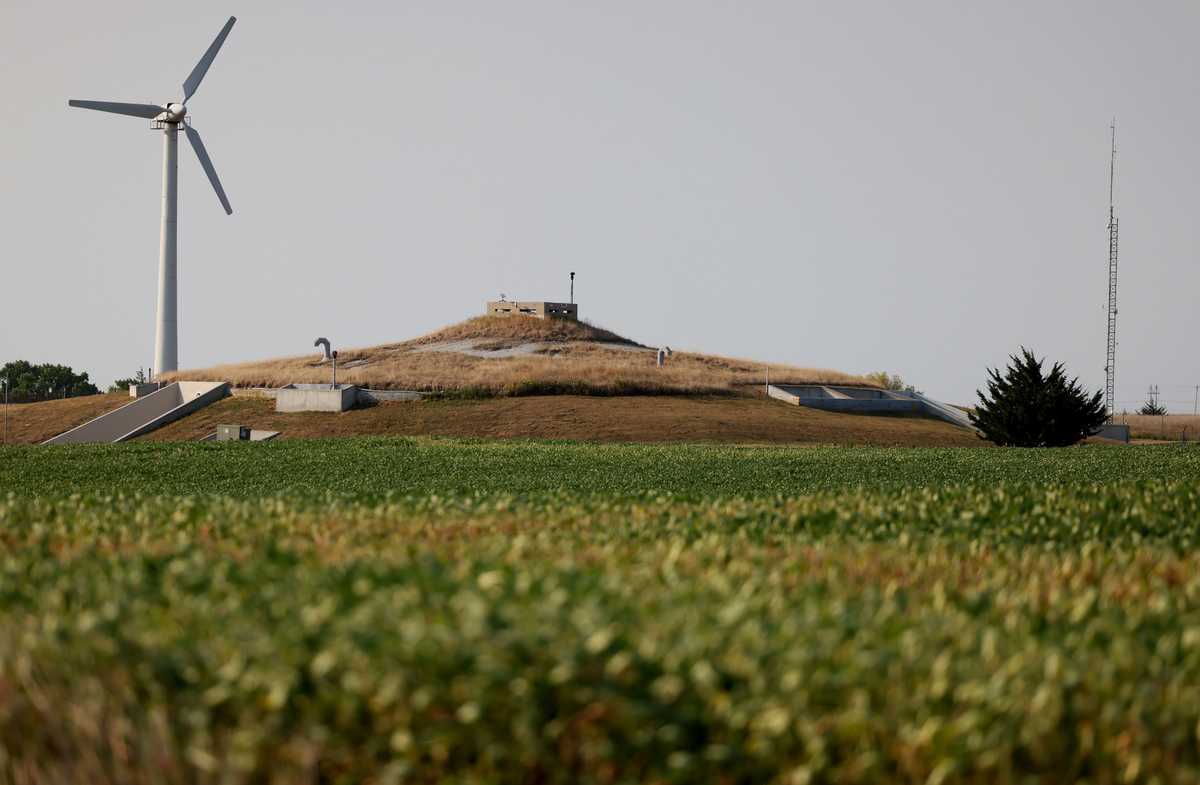
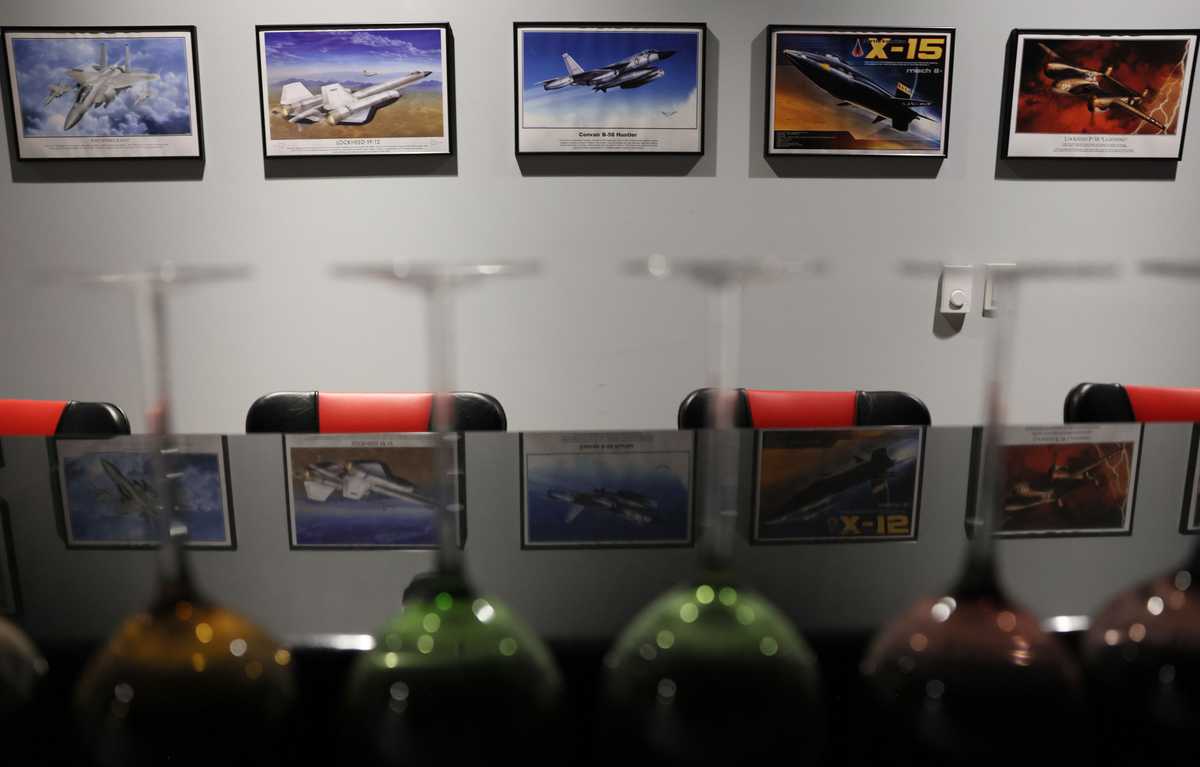


Mark Menosky, project manager of the Survival Condo, showed off the fresh lettuce grown inside the site’s hydroponic farm. The Survival Condo is a decommissioned nuclear missile vault that has been turned into luxury condos, where owners hunker down when and if a doomsday scenario occurs. (Jessica Rinaldi/Globe Staff)
Until the pandemic struck, this shrine to privilege, paranoia, and American ingenuity sat mostly empty, providing abstract peace of mind to faraway owners. In 2020, it finally got a test run, when families showed up from across the country and hunkered down here, most for several weeks.
Almost overnight, a sterile, empty shell transformed into a lively, diverse community, said Hall, with kids running in packs from waterslide to Ping-Pong table while moms bonded poolside. (Some families wore masks and some didn’t, said Hall, who spent time in an intensive care unit while battling his own life-threatening case of COVID-19.)
“It’s so full of life when there are people here,” he said.
Living in the bunker for weeks, residents discovered what it offered, and also what was missing. Some realized they needed to stockpile high-end hair care products before the next global disaster. Others asked that the bunker’s hydroponic farm, already producing 11 kinds of lettuce, also grow fresh flowers, and that the gym be outfitted with a dog treadmill.
To hear Hall tell it, the episode of COVID togetherness moved the condos closer to a Utopian ideal: waterslides plus nuclear-ready air filtration, plus spirited debate with no yelling. “People coexisted with each other,” he said proudly.
Assumptions about doomsday preppers aside, Hall said his underground community has no dominant political party — and minimal discord. “There’s a stereotype of a prepper as a gun-toting, camo-wearing nut, and it’s not true,” he said. “We’ve got people who are Democrats, Republicans, Libertarians. . . . These are well-educated people, a lot of self-made millionaires, who all get along.”
Hall sought from the start to engineer a sense of harmony inside the complex. After consulting a psychologist — one who previously advised the scientists running Biosphere 2 on how to keep its occupants happy in confinement — he adapted his plans to reflect her advice.
Among the innovations: a bakery, where residents get sensory stimulation from the comforting aroma of fresh-baked bread, and a bunker bar called the Sky Lounge — which the psychologist endorsed, as long as the complex also had a jail cell. (Hall calls it an “adult time-out room.”)
Claustrophobia could cut down on condo sales, so units feature “digital windows,” high-definition video displays where residents can order up their favorite views. (One asked to see the same Central Park vista she enjoys at her New York apartment.)
For all the strangeness of the setting, Hall said residents have little trouble sleeping — a bunker bonus they call “silo sleep.”
And if some on-site conveniences seem impractical — what use is a dentist’s office with no dentist? — interest has surged since the pandemic. Hall expects no trouble selling three condos that recently became available, and he’s developing a second silo site nearby.
The price is high: $2.4 million for a full-floor unit; $1.3 million for a half floor. (And yes, even bunkers come with condo fees — $2,625 to $5,250 monthly.) But if that means only a fortunate few will survive the end of days, it’s just an apocalyptic version of everyday America, where vast disparities in health care mean the rich already outlive the poor.
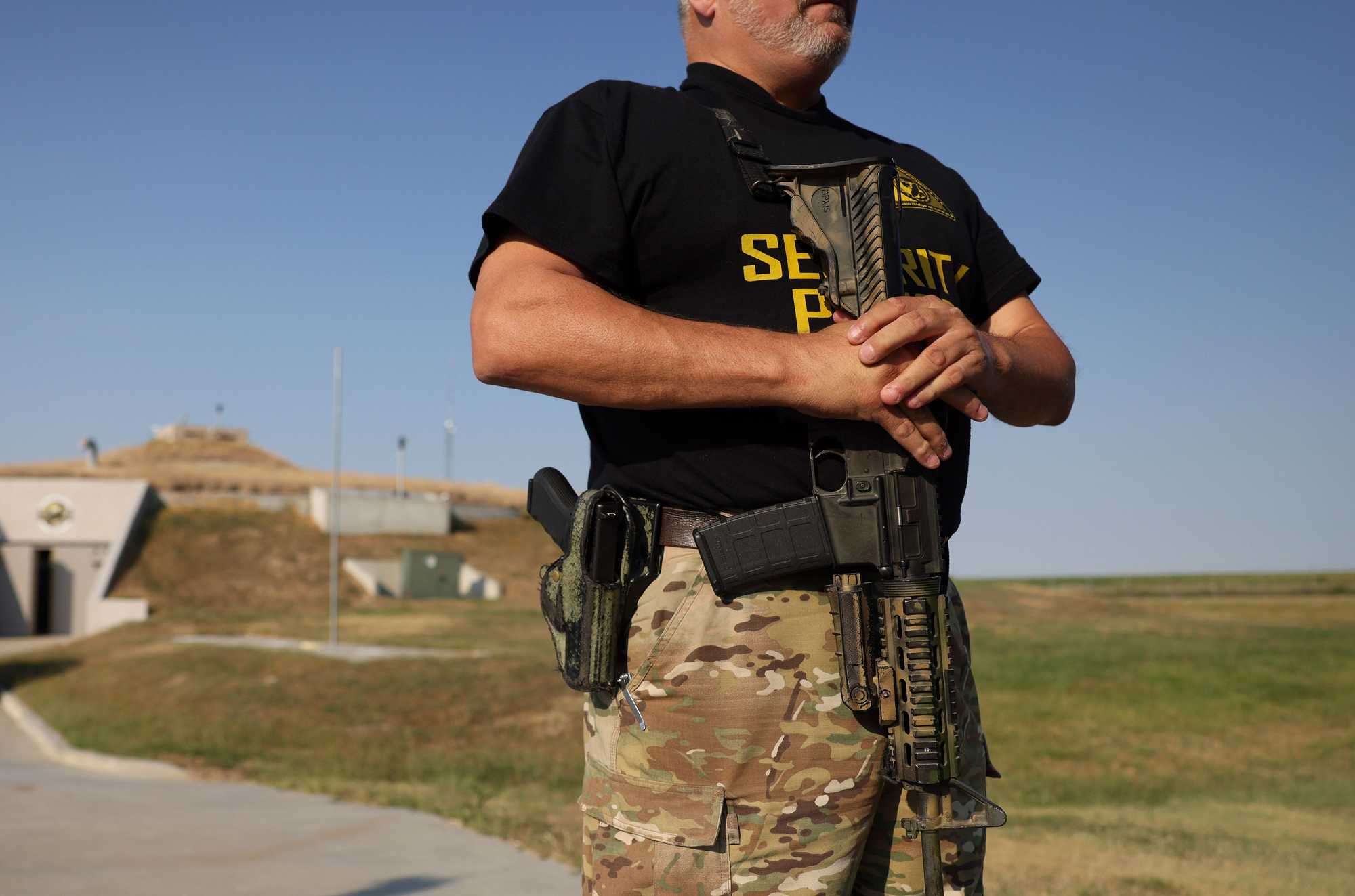
To Hall — who said he previously worked as a consultant for every branch of the US military, and as a contractor on the first Macintosh computer — criticism of his project, for its “doomsday elitism,” is bewildering. He’s proud of the breakthrough engineering, and the repurposing of a massive, man-made crater.
“I was feeling good,” he said, sounding slightly piqued, “about converting a weapon of mass destruction into an opportunity.”
It was time for us to go, so Hall escorted us back up to ground level, and out into the blazing Midwestern sun. Then he turned and began his descent back underground, the massive steel doors slowly swinging shut behind him.
Join the discussion: Comment on this story.
Credits
- Reporters: Julian Benbow, Diti Kohli, Hanna Krueger, Emma Platoff, Annalisa Quinn, Jenna Russell, Mark Shanahan, Lissandra Villa Huerta
- Photographers: Erin Clark, Pat Greenhouse, Jessica Rinaldi, and Craig F. Walker
- Editor: Francis Storrs
- Managing editor: Stacey Myers
- Photo editors: William Greene and Leanne Burden Seidel
- Video editor: Anush Elbakyan
- Digital editor: Christina Prignano
- Design: Ryan Huddle
- Development: John Hancock
- Copy editors: Carrie Simonelli, Michael Bailey, Marie Piard, and Ashlee Korlach
- Homepage strategy: Leah Becerra
- Audience engagement: Lauren Booker, Heather Ciras, Sadie Layher, Maddie Mortell, and Devin Smith
- Newsletter: LaDonna LaGuerre
- Quality assurance: Nalini Dokula
- Additional research: Chelsea Henderson and Jeremiah Manion
© 2022 Boston Globe Media Partners, LLC

